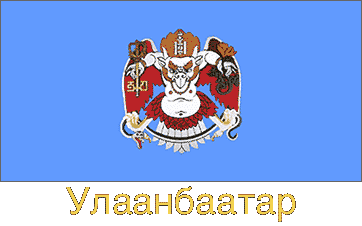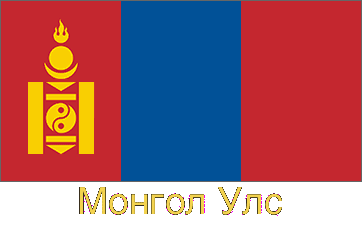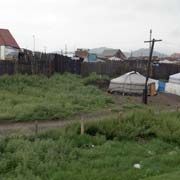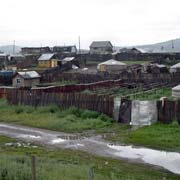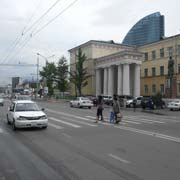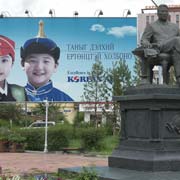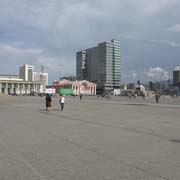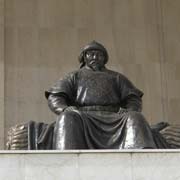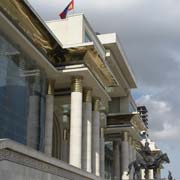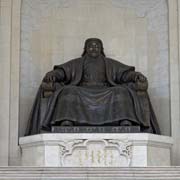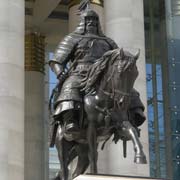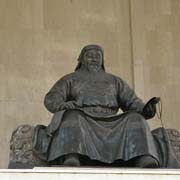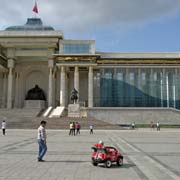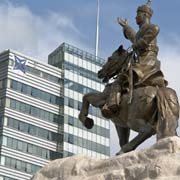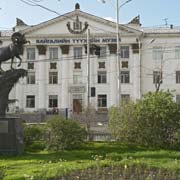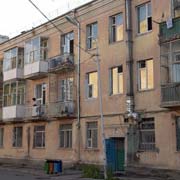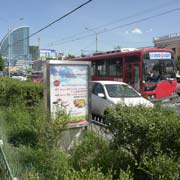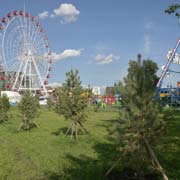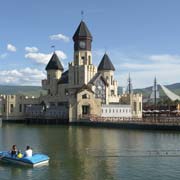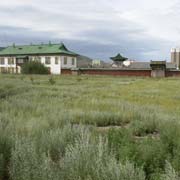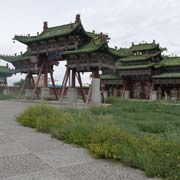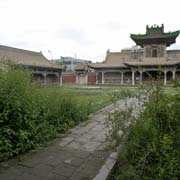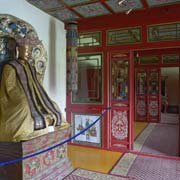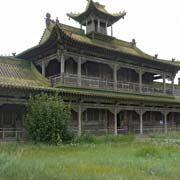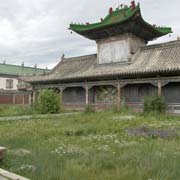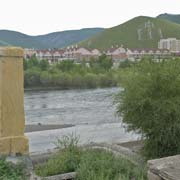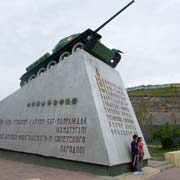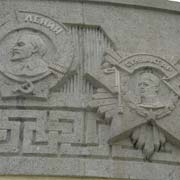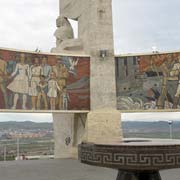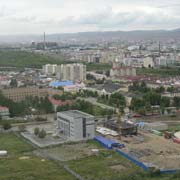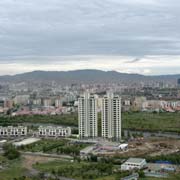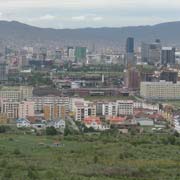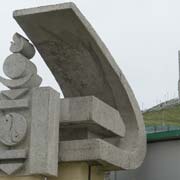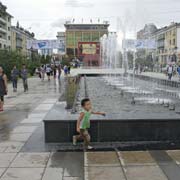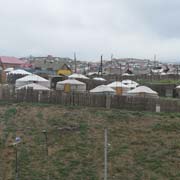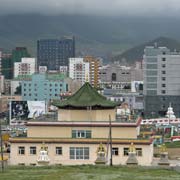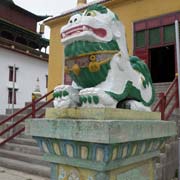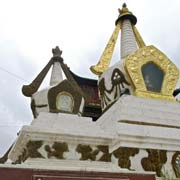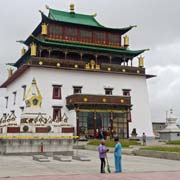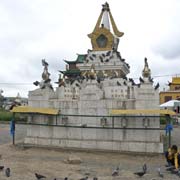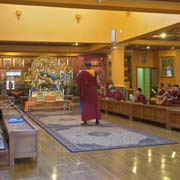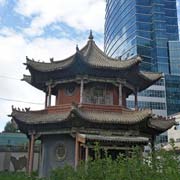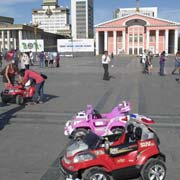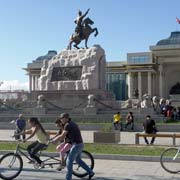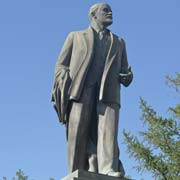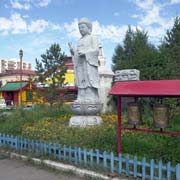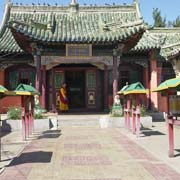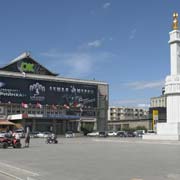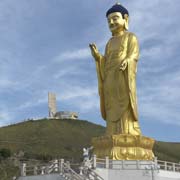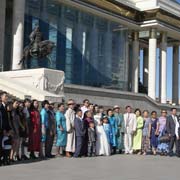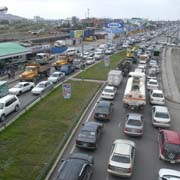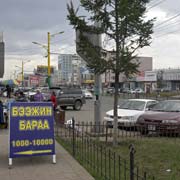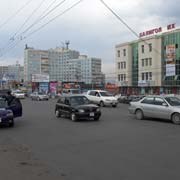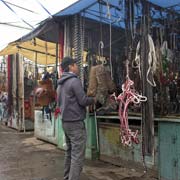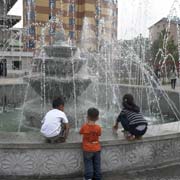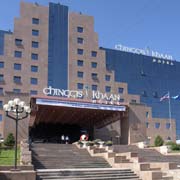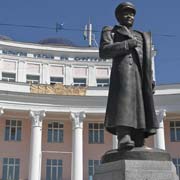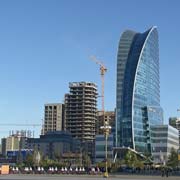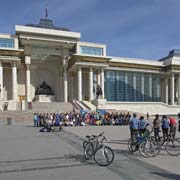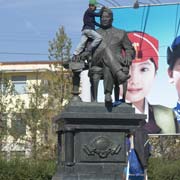Photos of Ulaanbaatar, the Capital of Mongolia
Ulaanbaatar, Mongolia’s Capital
Mongolia’s capital, and its largest city, lies in the centre of the country. It sits at an elevation of about 1,310 metres in a valley on the Tuul River. It is the country’s cultural, industrial, and financial heart, the centre of Mongolia’s road network, and connected by rail to the Trans-Siberian Railway in Russia and the Chinese railway system.
you may then send it as a postcard if you wish.
TThe population of Ulaanbaatar is over a million, almost half of all people living in Mongolia. A city of modern buildings and whole neighbourhoods where people still live in “gers”, the round felt tents of the nomads. It is the coldest capital in the world with brutal winters, with temperatures that may plunge below -40°C. Air pollution can be awful in the winter when so many people try to keep warm.
A Buddhist monastic centre was founded in 1639 in the area where the city now lies; it was called Örgöö (“Residence”), known to the outside world as Urga. In 1706 its name changed to Khüree (“Camp”), as it consisted of gers and was moved 28 times, each location chosen ceremonially, until 1778, when it stayed at its present place and became a significant centre. When Mongolia proclaimed its independence in 1911, the secular government and the palace of the Bogd Khan was located here, and the town’s name changed from Ikh Khüree (Great Camp) to Niislel Khüree (Capital Camp). When the Bogd Khan died in 1924, and the Mongolian People’s Republic was proclaimed, the capital was renamed Ulaanbaatar (“Red Hero”, probably referring to Sükhbaatar who had died the year before, although no name was ever quoted). In the west, the city was often still referred to as Urga or Kulun, the Chinese name of Khüree and later as Ulan Bator, the Russian spelling (Улан-Батор).
From the 1930s, the city was built in typical Soviet style with big apartment blocks, large theatres and enormous government buildings, destroying most temples and monasteries, some of those subsequently rebuilt and restored. The centre of the city is the vast Sükhbaataryn Talbai (Sükhbaatar Square). There is a large marble construction in front of the Parliament House and a statue of Genghis Khan, flanked by his son Ögedei en grandson Kublai Khan. The wide Enkh Taivny Örgön Chölöö, (Peace Avenue), the main street, stretches on both sides, with shops, cafés and busy traffic. There are many points of interest, like the Gandan Monastery, the Winter Palace of the Bogd Khan, the National Museum and many others.
